Editorial Board
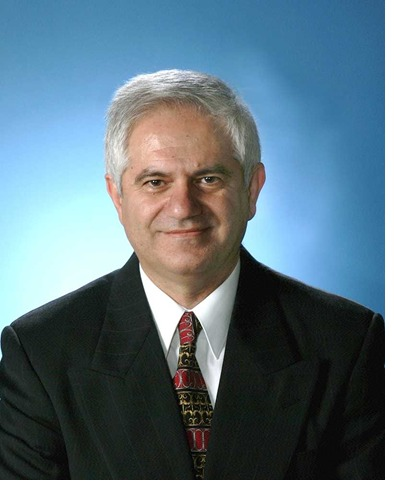

Alex Kazemi
ARK International LLC Chair Editor In Chief
Dr. Alex Kazemi a world recognized Micro Technologist and materials scientist is focusing on development of fiber optics, miniaturized interconnects, fiber optic sensors, and micro packaging of laser components for aerospace applications. He is Boeing Associate Technical Fellow and has worked for Boeing for 22 years. He is regarded as the leading expert in above areas by industry and academia, including US and European aerospace agencies. He has authored/edited 8 books and one text book chapter in the area of Photonics, Lasers, Sensors, Fiber Optics, Micro and Nano Technologies, plus published over 45 papers in International Journals and hundreds of presentations throughout of conferences and technical communities. His research publications have received 900 Read Milestone. He has received great many industrial awards, recognitions and patents.
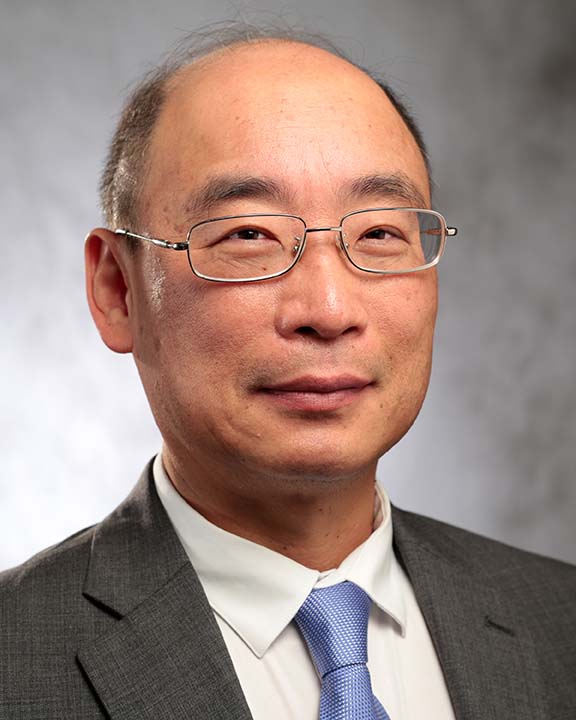

Ju Kim
Central Connecticut State University, USA
Dr. Ju Kim joined Central Connecticut State University in August 2019 after four years in a leadership position at the University of Houston—Clear Lake (UHCL). During his tenure at UHCL, he served as associate dean of the College of Science and Engineering for two years and the interim dean for another two years. In that position, he was responsible for six academic departments, 91 faculty, and more than 2,200 students. He worked with faculty to develop new programs, maintain clear communication channels, and conduct a broad-based strategic planning process. Also in collaboration with the faculty, he implemented new recruitment strategies and raised more than $1 million for labs, research, and scholarships.
Prior to UHCL, Dr. Kim served 19 years on the University of North Dakota faculty. As a tenured Professor of Physics, Dr. Kim served as chair of the Department of Physics and Astrophysics from 2011-15. Dr. Kim earned his Ph.D. in Physics at the University of Chicago and his B.A. in Physics and Chemistry from the University of California, San Diego (Revelle College). His research has focused on superconductivity. He has worked closely with students on research, advisement, and doctoral thesis projects and has published multiple texts and research papers. His work has earned him academic awards from both the University of North Dakota and the University of Chicago. Masters and doctoral committee supervision Scott D. Crockett, M.S. student in Physics (graduated in May 2001), University of North Dakota Brian Moritz, Ph.D. student in Physics (graduated in May 2000), University of North DakotaMatthewC. Nitschke, M.S. student in Physics (graduated in May 2005), University of North Dakota Tricia Johnson, M.S. student in Physics (graduated in May 2005), University of North Dakota Jerry Brooks, M.S. student in Physics (graduated in August 2008), University of North Dakota Andy Magness, M.S. student in Physics (graduated in 2010), University of North Dakota Sherry FieberBeyer, Ph.D. student in Earth System Science & Policy (graduated in August 2010), UND Mattew G. Brorby, M.S. student in Physics (graduated in August 2011), University of North Dakota Erandi Gunapala, Ph.D. student in Physics (graduated in August 2011), University of North Dakota Aranwela Hemantha Ph.D. student in Physics (graduated in December 2011), University of North Dakota Eric Serges M.S. student in Chemistry (graduated in December 2011), University of North Dakota Daniel Theis, Ph.D. student in Chemistry (graduated in December 2011), University of North Dakota Eric Serges M.S. student in Chemistry (graduated in December 2011), University of North Dakota Rashel Mokambe, Ph.D. student in Chemistry (graduated in May 2012), University of North Dakota Kailing Zhang, M.S. student in Physics (graduated in December 2012), University of North Dakota Dylan Nicholls, Ph.D. student in Physics (graduated in May 2014), University of North Dakota Patrick Tamukong, Ph.D. student in Chemistry (graduated in August 2014), University of North Dakota Dean Smith, Ph.D. student in Physics (graduated in August 2014), University of North Dakota Brent Thomson, Ph.D. student in Physics (graduated in December 2014), University of North Dakota Mohammed Mahmoud, M.S. student in Computer Science (graduated in May 2015), University of North Dakota Cody Rude, Ph.D. student in Physics (graduated in May 2015), University of North Dakota Rajesh Dhakal, Ph.D. student in Physics (graduated in May 2016) University of North Dakota Jason Hicks, Ph. D. student in Chemistry (graduated in May 2016), University of North Dakota Karki Pragalv, Ph.D. student in Physics (graduation in May 2019), University of North Dakota Madina Sultanova, Ph. D. student in Physics (graduated in August 2018), University of North Dakota
HONORS and AWARDS:
● Faculty Stars Awards (2010), University of North Dakota Faculty Stars Awards (2009), University of North Dakota● Faculty Stars Awards (2008), University of North Dakota● Nominated for Undergraduate Teaching Award (2007), University of North Dakota
● Nominated for Undergraduate Teaching Award (2012), University of North Dakota
● Associate Member of Graduate Faculty (1996), University of North Dakota
● Full Member of Graduate Faculty (1997), University of North Dakota
5 | Page
● Cowinner of Gregor Wenzel prize for undergraduate teaching (1986), The University of Chicago
PROFESSIONAL SERVICE: Teaching:
●Question leader for College Board AP Physics (2016‐2018)
● Table leader for College Board AP Physics (2012‐2014)
Reader for College Board AP Physics (2007, 2009‐2011)
● Reviewer for college physics textbooks (2008‐2010)
Undergraduate academic advisor (2005‐2015): advised and guided 52 physics majors and minors at University of North Dakota
● MCAT reviewer for premedicine students in UND (2007‐2010, 2012‐2013)
Research:
● Editor for the journal entitled "Topological Order" (2012,2014).
● Reviewer for Physical Review Letters and Physical Review B (1996present).
● Organizing Committee Member for the “48th Annual Midwest Solid State Conference” (October 2000) and Solid‐State Theory Symposium (October 2000)
● Research grant proposal reviewer for Research Seed Money at UND (2005‐2010)
●Grant proposal reviewer for National Science Foundation (2008).
Committee:
● College Tenure and Promotion Committee (2008‐2011), University of North Dakota
● University Faculty Senate (2005), University of North Dakota
● Physics and Astrophysics Colloquium (1999‐2000, 2005‐2006, 2009‐2010), University of North Dakota
● Department Assessment Committee (2007‐2010), University of North Dakota
● Chair of Department Assessment Committee (2010‐2011), University of North Dakota
●Chair of Department Direct Assessment of Teaching Committee (2007‐2008), Univ. of North Dakota
● Department Undergraduate Curriculum Committee (2000‐2002, 2004‐2010), Univ. of North Dakota
● Chair of Department Student Grievance Committee (2005‐2007), University of North Dakota
● Department Graduate Committee Member (2006‐2007, 2008‐2010), University of North Dakota
● Chair, Condensed Matter Theory Search Committee (2008‐2011, 2013), University of North Dakota
● Chair, Condensed Matter Experiment Search Committee (2008‐2011), University of North Dakota
● Department Library Committee (2010‐2011), University of North Dakota
● Department Chair Evaluation Committee (2007, 2009), University of North Dakota
● Shared Governance and Leadership Interest Group (2013), University of North Dakota
● CSE Executive Committee (2015‐Present), University of Houston‐Clear Lake
● CSE Curriculum Committee (2015‐2017), University of Houston‐Clear Lake
● CSE Curriculum Committee (2015‐2017), University of Houston‐Clear Lake
● Core Curriculum Assessment Committee (2015‐2017), University of Houston‐Clear Lake
● UHCL Academic Associate Council (2015‐2017), University of Houston‐Clear Lake
● UHCL Deans Council (2017‐2019), University of Houston‐Clear Lake
● UHCL Academic Council (2017‐2019), University of Houston‐Clear Lake
● UHCL University Council (2017‐2019), University of Houston‐Clear Lake
● UHCL Faculty Senate (2017‐2019), University of Houston‐Clear Lake
● UHCL Senior Leadership (2017‐2019), University of Houston‐Clear Lake
6 | Page
●UHCL Planning and Budget Committee (Alternate, 2018‐2019), University of Houston‐Clear Lake
●Facilities and Support Service Committee (2017‐2019), University of Houston‐Clear Lake
● Space Allocation and Utilization Subcommittee (2017‐2019), University of Houston‐Clear Lake
● Emergency Planning Committee (2018‐2019), University of Houston‐Clear Lake
●UHCL Strategic Planning and Facilitation Team (2019), University of Houston‐Clear Lake
Miscellaneous:
● Evaluated and written recommendation letters for 20‐25 pre‐medicine and pre‐dental students annually (2008‐2013). ● Judge for Northeast North Dakota Regional Science and Engineering Fair (1997, 2012‐2013)
● Public lecturer on Superconductivity (2012).
● Promoted physics education outreach to local high school students thru an annual Physics Day event (2002, 20042013); 227 students from local high schools participated in 2013.
●Faculty facilitator for the UND Welcome Weekend (2005, 2008).
● Chairs Leadership Cohort (2012, 2013).
● UND Chair Leadership Institute (2014).
● College of Arts & Sciences Council Work Group (2013)
● AP Physics Course Audit Consultant (2013‐Present).
● Bay Area Houston Economic Development, Education & Workforce Develop. Committee (2017‐2019)
RESEARCH INTERESTS:
Superconductivity: Strongly correlated systems Physical properties of superconductors. Terahertz Josephson junction devices Decoherence and entanglement in Josephson vortex quantum bits
Josephson junctions involving two‐ ap superconductors and topological insulators Fractional magnetic vortices and Josephson vortices Quantum magnetism: Exotic magnetic ground states in low dimensional systems
FUNDED GRANT ACTIVITIES:
● NSF ND EPSCoR grant, Interacting electrons in low dimensional conductors in high magnetic fields (May 1997 June 1998, $18,000) ● Faculty Research & Creative Activity grant, Origin of magnetic breakdown in two dimensional organic conductors (December 1998, $2,50) ● North Dakota NSFEPSCoR Small Equipment grant (July 1998, $6,640)
● Research Seed Money grant, High‐Tc superconductors, (June 2000 – June 2001, $25,116)
● Summer Graduate Research Professorship (June – August 2001, $6,000)
● NSF North Dakota EPSCoR grant, Collective Josephson vortex dynamics in high temperature superconductors (June 2002‐April 2003, $37,500)
7 | Page
● Research Seed Money grant, Long Josephson junction stack as a compact source for coherent teraHertz electromagnetic radiation (June 2003‐December 2004, $29,400)
● NSF ND EPSCoR grant, Entanglement of interacting Josephson vortex quantum bits in the noisy environment (March 2010‐August 2011, $32,952)
● Summer Graduate Research Professorship (June – August 2011, $7,500)
● CoPI on ND DPI grant, Improving Math and Science Literacy of Middle and High School Students of North Dakota Through Teacher‐Faculty Partnerships (October 2006 – September 2009, $1,500,000)
● PI on NSF STEMHSI grant, Building Capacity: Improving STEM Graduation Rates through Engaged Learning (October 2019 – September 2024, $2,499,930)
PAPER PRESENTATIONS:
National/international Paper Presentations
● Fermi liquid description of transport in the copper oxide superconductors, APS March Meeting, St Louis, MO (March 20‐24, 1989)
● Electronphonon interactions in copper oxides, International Conference in Materials and Mechanisms of Superconductivity High Temperature Superconductors, Stanford, CA (July 23‐28, 1989)
● Transport and magnetic properties of almost localized Fermi liquids, Aspen Winter Workshop, Aspen, CO (January 7‐13, 1990)
●Electronphonon contribution to the resistivity in the copper oxides, APS March Meeting, Anaheim, California (March 12‐ 16, 1990)
● Spinless fermions in a magnetic field on a frustrated lattice, APS March Meeting, Anaheim, California (March 12‐16, 1990)
● Electronic and transport properties of almost localized Fermi liquids, Gordon Conference on Superconductivity, Ventura, California (March 19‐23, 1990)
● Spin dynamics in the metallic phase of the copper oxides: comparison with NMR and neutron scattering experiment, APS March Meeting, Anaheim, CA (March 12‐16, 1990)
● The effect of strong Coulomb correlations on electron‐phonon interactions in the copper oxides: implications for transport, First CINVESTAV Symposium on the Manifestations of the Electron‐phonon Interaction in CuO & Related Superconductivity, Oaxtepec, Mexico (December 11‐14, 1990) (Invited)
● Effects of strong Coulomb correlations on electron‐phonon coupling in the high‐Tc superconductors: implications for transport, 1991 APS March Meeting, Cincinnati, OH (March 18‐22, 1991)
● Spinless fermions on frustrated lattice in a magnetic Field, APS March meeting, Cincinnati, OH (March 18‐22, 1991)
● Spin wave damping in the Hubbard antiferromagnet, APS March Meeting, Cincinnati, OH (March 1822, 1991) ● Instability in the doped Hubbard antiferromagnet, APS March Meeting, Cincinnati, OH (March 18‐22, 1991)
● From fermiology to spin dynamics: current status of Fermi liquid based approaches to the cuprates, Workshop on Fermiology of High‐Tc Superconductor, Argonne National Lab, (March 25‐27, 1991)
● Electronic and transport properties of almost localized Fermi liquids, Gordon Conference on Magnetism and Superconductivity, Wolfboro, NH (June 10‐14, 1991)
● dHvA effect in two‐dimensional interacting electron gases, APS March Meeting, Indianapolis, IN (March 19‐23, 1992)
● Role of electronphonon interactions in the Eliashberg equations for strongly correlated systems, APS March Meeting, Indianapolis, IN (March 19‐23, 1992)
8 | Page
● Is the phonon mechanism for superconductivity possible in strongly correlated systems?, Conference on Lattice Effects in High‐Tc Superconductors, Santa Fe, New Mexico (January 13‐15, 1992)
● Strong Coulomb correlation effects on the electron‐phonon contribution to transport and superconductivity, Conference on Lattice Effects in High‐Tc Superconductors, Santa Fe, NM (January 13‐15, 1992)
● Strong Coulomb correlation and lattice effects on de Haas‐van Alphen oscillations, Conference on Spectroscopies in Novel Superconductors, Santa Fe, NM (March 17‐19, 1993)
● Spin wave interactions in the Hubbard antiferromagnet, APS March Meeting, Pittsburgh, PA (March 21‐25, 1994)
● Effect of temperature dependent spin wave damping in the dimensional Hubbard antiferromagnet, International Conf. on Science & Technology of Synthetic Metals, Seoul, Korea, (July 24‐29, 1994)
● Phonon assisted mechanism for quantum spin relaxation, 1994 APS March Meeting, Pittsburgh, PA (March 21‐25, 1994)
● Effect of finite impurity concentration in magnetic alloys, Workshop on Quantum Impurity Problems, Gainesville, FL (February 24‐26, 1995)
● Effect of finite concentration in Kondo alloys: comment on heavy fermion problem, APS March meeting, San Jose, CA (March 20‐24, 1995)
● Thermodynamics of alloys with magnetic impurities, Conference on Physical Phenomena at High Magnetic Fields II, Tallahassee, FL (May 6‐9, 1995)
● Spin compensation in one dimensional Kondo lattice, APS March Meeting, St. Louis, MO (March 20‐24, 1996)
● Exact solution to the two‐impurity Kondo problem in one dimension, APS March Meeting, St. Louis, MO (March 20‐24, 1996)
● Phenomenological model of anomalous Hall effects in superconductors, APS March Meeting, Kansas City, MO (March 17‐21, 1997)
● The de Haas‐van Alphen effect in quasi‐two dimensional organic metals with magnetic breakdown, APS March Meeting, Kansas City, MO (March 17‐21, 1997)
● Prediction of effective mass in quasi‐two‐dimensional organic conductors with magnetic breakdown, APS March Meeting, Los Angeles, CA (March 16‐20, 1998)
● Realistic Hofstadter energy spectrum and ensemble dependent de Haas‐van Alphen effect in a(ET)2KHg(SCN)4, International Conference on Science and Technology of Synthetic Metals, held in Montpellier, France (July 11‐18, 1998)
● Anomalous temperature dependence of upper critical field in typeII superconductors, Conference on Physical Phenomena at High Magnetic Fields III, Tallahassee, Florida (October 24‐27, 1998)
● Temperature dependence of microwave conductivity for swave superconductors, 1999 APS Centennial Meeting, Atlanta, Georgia (March 20‐26, 1999)
● Can a swave superconductor exhibit the T2 behavior in electronic specific heat?, 1999 APS Centennial Meeting, Atlanta, Georgia (March 20‐26, 1999)
● Ensemble and finite temperature dependence on the magnetic breakdown effect in a‐(ET)2KHg(SCN)4, 1999 APS Centennial Meeting, Atlanta, Georgia (March 20‐26, 1999)
● Unconventional electron‐phonon superconductivity in nickel borocarbides?, Third International conference on New Theories, Discoveries and Applications of Superconductors and Related materials held in Honolulu, Hawaii (January 15 ‐ January 19, 2001), (invited).
● Magnetic breakdown at high magnetic fields: semi‐classical and quantum mechanical treatments, 2000 APS March Meeting, Minneapolis, Minnesota (March 20‐24, 2000)
●Effects of incomplete superconducting condensation on electron tunneling in superconductors, 2000 APS March Meeting, Minneapolis, Minnesota (March 20‐24, 2000)
9 | Page
● Microwave response of superconductors with uncondensed quasiparticles at low temperatures, Sixth International Conference on Materials and Mechanisms of Superconductivity at High Temperature Superconductors in Houston, Texas (February 20‐25, 2000)
● Effects of incomplete superconducting condensation on electronic thermal conductivity at very low temperatures, 6th International Conference on Materials and Mechanisms of Superconductivity at High Temperature Superconductors, Houston, Texas (February 20‐25, 2000)
● Unusual electronphonon superconductivity in nickel borocarbides?, Third international conference on New Theories, Discoveries and Applications of Superconductors and Related materials held in Honolulu, Hawaii (January 15‐19, 2001), (invited)
● Collective dynamics of stacked Josephson junctions and Josephson‐coupled layered superconductors in parallel magnetic Fields, 2001 APS March Meeting, Seattle, Washington (March 12‐16, 2001)
● Quantum phase transitions in one‐dimensional long Josephson junction stacks in parallel magnetic fields, 2002 APS March Meeting, Indianapolis, Indiana (March 18‐22, 2002)
●Effect of quantum and thermal °Fluctuations on the stability of mutualphase locking in long Josephson junction stacks, 4th l Conference on New Theories, Discoveries, and Applications of Superconductors and Related Materials, San Diego, California (January 16‐21, 2003).
● Effects of incomplete superconducting condensation on electron tunneling, Fourth International Conference on New Theories, Discoveries, and Applications of Superconductors and Related Materials, held in San Diego, California (January 16‐21, 2003) (invited)
● Macroscopic quantum tunneling of phase‐locked fuxons in coupled long Josephson junctions 2004 Korean Physical Society April Meeting, Suwon, Korea
● Decoherence in Josephson vortex quantum bits, Eighth International Conference on Materials and Mechanisms of Superconductivity High Temperature Superconductors, Dresden, Germany (July 9‐14, 2006) (invited)
●Effects of resonant cavity on macroscopic quantum tunneling in long Josephson junction, 2007 APS March Meeting, Denver Colorado (March 5‐9, 2007)
● Fluxon dynamics in long Josephson junction with two‐band superconductor, Physical Phenomena at High Magnetic Fields VII, Tallahassee, Florida (December 4 ‐8, 2010)
● Fluxon dynamics in two‐band superconductor‐based long Josephson junction, APS March Meeting, Dallas, TX (March 21‐25, 2011)
●Dynamics of Josephson vortex interacting with Majorana bound modes in Long Josephson junctions, 2013 APS March Meeting, Baltimore, Maryland (March 18‐24, 2013)
● In‐gap states of Josephson junction with two‐gap superconductors, APS March Meeting, Baltimore, MD (March 18‐24, 2013)
● Fractional Josephson vortices in two‐gap superconductor Long Josephson Junctions, APS March Meeting, Denver, CO (March 3‐7, 2014)
● Fractional vortices in multi‐gap superconductors, APS March Meeting, Denver, CO (March 3‐7, 2014) Recent Regional Paper Presentations
● Dynamics of long Josephson junction with two‐band superconductors, ND EPSCoR 2010 State Conference, Grand Forks, North Dakota (September 29, 2010)
● Equation of motion for non‐linear phase dynamics of two coupled long Josephson junction with twogap superconductors, UND Scholarly Forum, Grand Forks, North Dakota (February 27, 2012)
● Mid‐gap state in two gap superconductor SIS junction, ND EPSCoR State Conference, Grand Forks, North Dakota (September 18, 2012) ● In gap states in twogap superconductor Josephson junctions,UND Scholarly Forum, Grand Forks, North Dakota (March 5, 2013) 10 | Page
LIST OF PUBLICATIONS:
Books: 1. Essential College Physics: Part 1, Ju H. Kim (Linus Learning, Ronkonkoma, 2013) (ISBN: 978‐60797369‐0). 2. Essential College Physics: Part 2, Ju H. Kim (Linus Learning, Ronkonkoma, 2014) (ISBN: 978‐160797‐416‐1). 3. Essential College Physics: Part 3, Ju H. Kim (in preparation for publication in 2019). Refereed Research Journal Papers:
1.The Kondo boson theory of the dynamic susceptibility of heavy fermions, A. Auerbach, J. H. Kim and K. Levin, Physica B140, 50 (1987).
2. Theory of antiferromagnetic correlations and neutron‐scattering cross section in heavy fermion metals, A. Auerbach, J. H. Kim, K. Levin and M. Norman, Phys. Rev. Lett. 60, 623 (1988).
3. Electron phonon interactions in copper oxides, J. H. Kim, K. Levin, R. Wentzcovitch and A. Auerbach, Physica C162‐164, 1463 (1989).
4.Assessment of Fermi liquid description for the normal state of high‐Tc superconductors, J. H. Kim, K. Levin and A. Auerbach, Phys. Rev. B39, 11633 (1989).
5. Electron phonon interactions in the copper oxides: implications for the resistivity, J. H. Kim, K. Levin, R. Wentzcovitch and A. Auerbach, Phys. Rev. B40, 11378 (1989).
6.NMR relaxation and neutron scattering in a Fermi liquid picture of the metallic copper oxides, J. P. Lu, Q. Si, J. H. Kim and K. Levin, Phys. Rev. Lett. 65, 2466 (1990).
7.Phenomenological description of the copper oxides as almost localized Fermi liquids, Q. Si, J. H. Kim, J. P. Lu and K. Levin, Phys. Rev. B42, 1033 (1990).
8.Metallic copper oxides as an almost localized Fermi liquid, J. H. Kim, Q. Si, J. P. Lu and K. Levin, Physica B163, 275 (1990).
9.Spinless fermions on frustrated lattices in a magnetic field, W. Barford and J. H. Kim, Phys. Rev. B43, 559 (1991). 10.From fermiology to spin dynamics: current status of Fermi liquid based approaches to the cuprates, K. Levin, Q. Si, Y. Zha, J. H. Kim and J. P. Lu, J. Phys. Chem. Solids 52, 1337 (1991).
11. The effect of strong coulomb correlations on electron‐phonon interactions in the copper oxides: implications for transport, J. H. Kim, K. Levin, R. Wentzcovitch and A. Auerbach, ElectronPhonon Interaction in Oxide Superconductors, Edited by R. Baquero (World Scientific, Singapore, 1991).
12.Normal state properties in the cuprates and their Fermi liquid based interpretation, K. Levin, J. H. Kim, J. P. Lu, and Q. Si, Physica C175, 449 (1991).
11 | Page
13. Electron‐phonon interactions in the high temperature superconductors, J. H. Kim, K. Levin, R. Wentzcovitch and A. Auerbach Phys. Rev. B44, 5148 (1991).
14.Microscopic Fermi liquid theory of NMR relaxation and neutron scattering in the metallic copper oxides, J. P. Lu, Q. Si, J. H. Kim and K. Levin, Physica C179, 191 (1991).
15.Current status of Fermi liquid based approaches to the cuprates, K. Levin, Q. Si, J. H. Kim and J. P. Lu, High‐Temperature Superconductivity, Edited by J. Ashkenazi et al. (Plenum Press, NY, 1991).
16.The doped Hubbard antiferromagnet: instability and effective interactions, A. Singh, Z. Tešanović, and J. H. Kim, Phys. Rev. B44, 7757 (1991).
17. Strong coulomb correlation effects on the electron‐phonon contributions to transport and superconductivity, J. H. Kim and K. Levin, Lattice Effects in High‐Tc Superconductors, Edited by Y. Bar‐Yam et al. (World Scientific, Singapore, 1992).
18.Electrons confined on the surface of a sphere in a magnetic field, J. H. Kim, I. D. Vagner and B. Sundaram, Phys. Rev. B46, 9501 (1992).
19.Instability of the spiral state of the doped Hubbard model, A. Singh, Z. Tešanović and J. H. Kim, Pramana‐J. Phys. 38, L211 (1992).
20.Is the phonon mechanism for superconductivity possible in strongly correlated systems?, J. H. Kim and Z. Tešanović, Lattice Effects in HighTc Superconductors, Edited by Y. Bar‐Yam et al. (World Scientific, Singapore, 1992).
21.Strong coulomb correlation and lattice effects on de Haasvan Alphen oscillations, J. H. Kim and I. D. Vagner, J. Phys. Chem. Solids 54, 1269 (1993).
22.Effects of strong coulomb correlations on the phonon mediated superconductivity: a model inspired by copper oxides, J. H. Kim and Z. Tešanović, Phys. Rev. Lett. 71, 4218 (1993).
23. Lattice effects on de Hass van Alphen oscillations in strongly correlated systems, J. H. Kim and I. D. Vagner, Phys. Rev. B48, 16564 (1993).
24.A model for giant magnetoresistance in magnetic granular solids, J. H. Kim, J. Q. Xiao, C. L. Chien, Z. Tešanović and L. Xing, Solid State Commun. 89, 157 (1994).
25.Electronphonon assisted nuclear spin relaxation in two dimensional electron systems, J. H. Kim, I. D. Vagner and L. Xing, Phys. Rev. B49, 16777 (1994).
26.Effects of finite concentration in Kondo alloy systems, L. P. Gor'kov and J. H. Kim, Physica C235240, 2451 (1994).
27.Effects of temperature dependent spin wave damping in the twodimensional Hubbard antiferromagnet, J. H. Kim, Synthetic Metals 71, 1631 (1995).
28.Effect of finite concentration in Kondo alloys: an approach to the heavy fermion, L. P. Gor'kov and J. H. Kim, Phys. Rev. B51, 3971 (1995).
12 | Page
29.Interplay between the Kondo effect and the RKKY interaction in the two‐impurity model, L. P. Gor'kov and J. H. Kim, Philos. Mag. B74, 447 (1996).
30.Thermodynamics of alloys with magnetic impurities, L. P. Gor'kov and J. H. Kim, Physical Phenomena at High Magnetic Fields II, Edited by Z. Fisk et al. (World Scientific, Singapore, 1996) p. 197.
31.Origin of anomalous magnetic breakdown frequencies in quasi‐two dimensional organic conductors, P. S. Sandhu, J. H. Kim, and J. S. Brooks, Phys. Rev. B56, 11566 (1997).
32.Realistic Hofstadter energy spectrum and ensemble dependent de Haas‐van Alphen effect in
(ET)2KHg(SCN)4, S. Y. Han, J. H. Kim, and J. S. Brooks, Synthetic Metals 101‐103, 2084 (1999).
33.Anomalous temperature dependence of upper critical field in typeII superconductors, J. H. Kim and Z. Tešanović, Physical Phenomena at High Magnetic Fields III, Edited by Z. Fisk et al. (World Scientific, Singapore, 1999) p. 376.
34. Magnetic breakdown phenomenon in quasi‐two dimensional organic conductors: A quantum model inspired by a realistic band structure, J. H. Kim, S. Y. Han, and J. S. Brooks, Phys. Rev. B60, 3213 (1999).
35.Effects of incomplete superconducting condensation in swave superconductors, J. H. Kim, Phys. Rev. B61, 3579 (2000).
36.Effects of incomplete superconducting condensation on electronic thermal conductivity at very low temperatures, J. H. Kim, Physica C341‐348, 1865 (2000).
37. Magnetic breakdown at high magnetic fields: semi‐classical and quantum treatments, S. Y. Han, J. S. Brooks and J. H. Kim, Phys. Rev. Lett. 85, 1500 (2000).
38.Microwave response of superconductors with uncondensed quasiparticles at low temperatures, J. H. Kim and B. L. Nellermoe, Physica C341‐348, 1673 (2000).
39. Unusual electronphonon superconductivity in nickel borocarbides?, J. H. Kim and D. H. Wu, Physica C364‐365, 24 (2001).
40. Collective mode in Josephsoncoupled layered superconductors in weak parallel magnetic fields, J. H. Kim, J. Mod. Phys. B15, 3347 (2001).
41. Quantum phase transitions in onedimensional long Josephson junction stacks in parallel magnetic field, J. H. Kim, Phys. Rev. B65, 100509 (R) (2002).
42.Collective Josephson vortex dynamics in long Josephson junction stacks, J. H. Kim and J. Pokharel, Physica C384, 425 (2003).
43.Effects of quantum and thermal fluctuations on the stability of mutual phase‐locking in long Josephson junction stacks, J. H. Kim, Int. J. Mod. Phys. B17, 3708 (2003).
44.Effects of incomplete superconducting condensation on electron tunneling, J. H. Kim, Int. J. Mod. Phys. B17, 3293 (2003).
13 | Page
45. Macroscopic quantum tunneling of phased‐locked fluxons in coupled long Josephson junctions, J. H. Kim and Kyungsun Moon, Phys. Rev. B71, 104524 (2005)46.Decoherence in Josephson vortex quantum bits: Long‐Josephson‐junction approach to a two‐state system, J. H. Kim, R. Dhungana and K.‐S. Park, Phys. Rev. B73, 214506 (2006).
47.Decoherence in Josephson vortex quantum bits, J. H. Kim, R. Dhungana and K.‐S. Park, Physica C 460‐462, 339 (2007).
48.Effects of a resonant cavity on macroscopic quantum tunneling of fluxon in long Josephson junctions, J. H. Kim and R. Dhungana, Phys. Rev. B83, 064503 (2011).
49.Fluxon dynamics of long Josephson junction with two‐gap superconductors, J. H. Kim, Bal‐Ram Ghimire, and Hao‐Yu Tsai, Phys. Rev. B85, 134511 (2012).
Manuscript in preparation:
50. Fractional Josephson vortices in two‐gap superconductor long Josephson junctions, J. H. Kim 51. Separation of fractional fluxons in two‐gap superconductor long Josephson junctions, V. E. Mayes, J. H. Kim, and Lawrence A. Rhoads


Thomas F. George
University of Missouri-St. Louis, USA
Thomas F. George (Chancellor/Professor Emeritus) served as chancellor and professor of chemistry and physics at the University of Missouri–St. Louis from 2003 until his retirement in 2019. Prior to that, he was chancellor at the University of Wisconsin–Stevens Point, provost at Washington State University, dean of science at SUNY-Buffalo, and promoted by age 29 to full professor of chemistry at the University of Rochester. He received his B.A. degree (Phi Beta Kappa) with a double major in chemistry and mathematics from Gettysburg College, and his M.S. and Ph.D. degrees at age 23 from Yale University, with postdoctoral appointments at MIT and UC-Berkeley.
Tom’s research specialty is chemical/materials/laser/nanophysics, including nanomedicine. He continues to be an active researcher with 800 papers, 8 authored and 18 edited books. His awards include the Marlow Medal from the Royal Society of Chemistry (UK), Medal of Honor from Gulf University for Science and Technology in Kuwait, and Diploma of Honour from Seinájoki University of Applied Sciences in Finland. He holds honorary doctorates from the University of Szeged in Hungary and Phranakhon Rajabhat University in Thailand, and he has been elected as a foreign member of the Korean Academy of Science and Technology. As a hobby, he plays jazz keyboard and has performed throughout the St. Louis region and overseas in Bosnia, Croatia, China, Hungary, Kuwait, Oman, Romania and Russian Siberia.
Tom has been married since 1970 to Dr. Barbara Harbach, Curators’ Distinguished Professor Emerita of Music, former chair of the Department of Music, director of the School of Fine and Performing Arts, and director of Women in the Arts at the University of Missouri-St. Louis. They are the proud owners (actually, servants) of four cats – two tortoise females (Luna and Stella) and two younger, mischievous males (Jeremiah and Jarrett).


William (Doc A) Arrasmith
Florida Institute of Technology, USA
Dr. Arrasmith is currently a professor in the Department of Engineering Systems at FIT. He has 20 years experience with government research and development programs and has had extensive exposure to electro-optical, infrared, and laser detection systems. Prior to his position at Florida Tech, Dr. Arrasmith served as Program Manager of Physics and Electronics at the Air Force Office of Scientific Research (AFOSR) in Washington DC. In 1997 he moved to the United States Naval Academy in Annapolis, Maryland to teach courses in Engineering and Linear Adaptive Optics. Dr. Arrasmith was then reassigned to the Air Force Technical Applications Center (AFTAC) at Patrick Air Force Base where he became Chief of the Systems and Technology Division. He was later appointed Division Chief for the Advanced Science and Technology Division of the AFTAC and remained in the position until joining Florida Tech in 2003.


Andrei Afanasev
The George Washington University, USA
Research Interests: Nuclear & Particle Physics, Physics of Particle Accelerators; Quantum Electrodynamics; Condensed Matter Physics

Boris Gramatikov
Wilmer Eye Institute Johns Hopkins University School of Medicine Baltimore, USA... Biography
Boris Gramatikov
Wilmer Eye Institute Johns Hopkins University School of Medicine Baltimore, USA
Boris Gramatikov obtained his Dipl.-Ing. degree in Biomedical Engineering in Germany, and his Ph.D. in Bulgaria. He has completed a number of postdoctoral studies in Germany, Italy and the United States. He joined the faculty of the Biomedical Engineering Department of The Johns Hopkins University in 1996, and has been working in the Laboratory of Ophthalmic Instrumentation Development at The Wilmer Eye Institute since 2000. His areas of expertise include electronics, optoelectronics, computers, computer modeling, signal/image processing, data analysis, instrumentation design, biophotonics, ophthalmic and biomedical optics, polarization optics, all applied to the development of diagnostic methods and devices for ophthalmology and vision research. His team has developed a series of pediatric vision screeners. He has over 120 publications, 41 of which in high-impact peer-reviewed journals. He serves as a reviewer and editorial board member with a number of technical and medical journals
Activities & Honors
Honors
- 2018 Meritorious Achievement Award in Continuing Education, Institute of Electrical and Electronics Engineers
- The 2017 Outstanding Professional Award, Institute of Electrical and Electronics Engineers
- Biomedical Research Collaboration Award, Hartwell Foundation, 2012
Professional Activities
- Director, Continuing EE Education (CEEE)
- Reviewer, IEEE Transactions on Biomedical Engineering
- Reviewer, Annals of Biomedical Engineering
- Reviewer, Biomedical Engineering OnLine
- Reviewer, Medical Devices: Evidence and Research
- Reviewer, Biomedical Instrumentation & Technology Biophysical Reviews and Letters


Norbert Kroo
Wigner Physics Research Center and Hungarian Academy of Sciences
Norbert Kroó is Vice-President of the Hungarian Academy of Sciences and is professor of the Roland Eötvös University and the Technical University, both in Budapest. For 18 years he was the founding director of the Research Institute for Solid State Physics and Optics of the Hungarian Academy of Sciences. In the first part of his scientific career he used nuclear methods in condensed matter studies and changed later to laser physics and quantum optics. Surface plasmon optics is a typical field of this type. He has published about 300 scientific papers and holds 40 patents.
While with the Hungarian Academy of Sciences he worked in several countries such as Sweden, Germany, France, Soviet Union, etc. and with outstanding scientists such as Herbert Walther and Alexander Prokhorov.
He is a member of the Hungarian Academy of Sciences, the Hungarian Academy of Engineering, Academia Europaea, European Academy of Sciences and Arts, the Spanish Royal Academy, honorary doctor of several European universities and the Joint Institute of Nuclear Research (Dubna), member and former president of the European Physical Society, fellow of the Institute of Physics, member of editorial boards of several journals. He serves as member or chair of different advisory or experts groups of the European Union and is a member of the Scientific Council of the European Research Council.
For his work he has received several awards and honours such as the 1st research prize of the Hungarian Academy of Sciences, the Zoltan Gyulai and the Peter Pazmany Prizes, the Alexander Humboldt Research Prize, the Pro Doctorandis Prize from the Association of Hungarian PhD Students, the Jedlik Prize from the Hungarian Patent Office, the Cross of the Hungarian Republic with the Star, the De Scientia et Humanitate Optime Meritus honorary medal of the Czech Academy of Sciences, the Nummum Academiae Memoraleu Tribuit medal of the Slovak Academy of Sciences, the Sub Auspiciis golden Ring of the Hungarian Republic, the Dennis Gabor Prize, and Hungarnet IT Prize, and others.


Nicolas Javahiraly
University of Strasbourg, France
Nicolas Javahiraly is an associate professor in physics at the University of Strasbourg. He did his PhD in Photonics at the same university on fiber optic sensors. After a post-doc at Harvard University on the interaction between ultra-short laser pulses and matter, he worked as a project manager and expert in the Sagem Defense group in Paris. He joined the University of Strasbourg in 2007 and is currently working on nano-optical sensors and plasmonics for various applications such as gas detection, pollutants detection and photoconversion systems for example
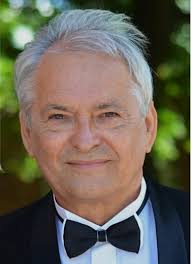

Ghenadii Korotcenkov
Moldova State University, Moldova
Ghenadii Korotcenkov earned his PhD in material sciences from the Technical University of Moldova, Chisinau, Moldova in 1976 and his doctor of science degree (doctor habilitate) in physics from the Academy of Science of Moldova in 1990. He has more than 45 years of experience as a scientific researcher. For a long time, he has been the leader of the gas sensor group and manager of various national and international scientific and engineering projects carried out in the Laboratory of Micro- and Optoelectronics, Technical University of Moldova and supported from international foundations and programs such as the CRDF, the MRDA, the ICTP, the INTAS, the INCO-COPERNICUS, the COST, and the NATO. From 2007 to 2008, he was an invited scientist in Korean Institute of Energy Research, Daejeon, South Korea. Then, until the end of 2017 Dr. G. Korotcenkov was a research professor at the School of Materials Science and Engineering at Gwangju Institute of Science and Technology, Gwangju, South Korea. Currently Dr. G. Korotcenkov is the chief scientific researcher (research professor) at the Department of Physics and Engineering at the Moldova State University, Chisinau, the Rep. of Moldova.
Dr. G. Korotcenkov is either the author or editor of 39 books, including the 11-volume Chemical Sensors series published by the Momentum Press (USA), 15-volume Chemical Sensors series published by Harbin Institute of Technology Press (China), 3-volume Porous Silicon: From Formation to Application published by CRC Press (USA), 2-volume Handbook of Gas Sensor Materials published by Springer (USA), and 3-volume Handbook of Humidity Measurements published by CRC Press (USA). In addition, at present, Dr. G. Korotcenkov is a series’ editor of Metal Oxides series, which is being published by Elsevier. Starting from 2017, already 16 volumes have been published within the framework of that series.
Dr. G. Korotcenkov is the author and coauthor of more than 600 scientific publications, including 30 review papers, 38 book chapters, and more than 200 articles published in peer-reviewed scientific journals (h-factor = 42 [Scopus] and h-factor = 51 [Google Scholar citation]).
In the majority of publications, he is the first author. Besides, Dr. G. Korotchenkov is a holder of 17 patents. He has presented more than 250 reports at national and international conferences, including 17 invited talks. Dr. G. Korotcenkov was co-organizer of more than 10 international scientific conferences.
Research activities of Dr. G. Korotcenkov are honored by the Prize of the Academy of Sciences of Moldova (2019), an Award of the Supreme Council of Science and Advanced Technology of the Republic of Moldova (2004); Prize of the Presidents of the Ukrainian, Belarus, and Moldovan Academies of Sciences (2003); and National Youth Prize of the Republic of Moldova in the field of science and technology (1980), among others. Dr. G. Korotcenkov also received a fellowship from the International Research Exchange Board (IREX, United States, 1998), Brain Korea 21 Program (2008–2012), and Brainpool Program (Korea, 2007-2008 and 2015–2017).
Present scientific interests starting from 1995 include:
- material science, focusing on the metal oxide film deposition and characterization,
- surface science, focusing on the study of the nature of gas sensing effects
- design of thin film gas sensors and thermoelectric convertors.
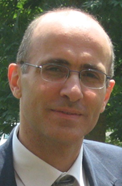

Alessandro Lascialfari
University of Pavia, Italy
Alessandro Lascialfari is currently full professor at the Department of Physics of the University of Pavia. He got the MD in Physics in 1989, the PhD in Physics in 1994, and got several postdoc/researcher positions from 1994 to 2005, when he became associate professor at the University of Milano. In 2015 he won the position of full professor, and in October 2019 he transferred to the University of Pavia. Now he teaches to MD and PhD students in Physics of the University of Milano and Pavia, to MD students of Technical Radiology, and at the Specialization School in Medical Physics of Milano (where he was Director in the period 2016-2019). Since the end of the MD thesis period, he coauthored more than 200 papers on international peer-reviewed journals, and his research has been developed by making use of NMR, MuSR, SQUID, calorimetry, MRI, AFM and Magnetic Fluid Hyperthermia (MFH) techniques. He has obtained important results in the study of magnetic properties and spin dynamics of HTSC superconductors, and of nanomagnets and low dimensional magnetic systems. He investigated deeply nano-structures useful as MRI and Magnetic Fluid Hyperthermia agents, and recently he was involved in the radiomic analysis of MRI/CT data.


J.V. Yakhmi
Elected Member, Asia Pacific Academy of Materials
Prof. (Dr.) J.V. Yakhmi (b. 1946), has spent a research career of 45 years at Bhabha Atomic Research Centre. At the time of his retirement in 2010, he was:
- Associate Director of Physics Group, BARC
- Head of Technical Physics & Prototype Engineering Division;
- Adviser to the Chairman, AEC;
- Chairman of the Basic Sciences Committee of BRNS (DAE);
- Program Director, Spectroscopy, Synchrotron and Functional Materials, BARC
Later, during 2012 - 2016, he served as DAE Raja Ramanna Fellow at the Homi Bhabha National Institute - a Deemed University of DAE at Mumbai. Simultaneously, during 2012-2015, he worked as Chairman, Atomic Energy Education Society, Mumbai, which runs 31 Schools and Junior Colleges across India.
A 1975 Ph.D. in Condensed Matter Physics from Mumbai University, his focus of research has been on the topics related magnetism, superconductivity and soft matter. He is credited with the establishment of a program on the use of molecular materials for fabrication of Molecular Magnets, Sensors, Bio-sensors, and Organic Electronic Devices at BARC. He has published 388 papers in peer-reviewed International journals and 67 Review articles in Journals/Books, and edited/written 8 books. He has a U.S. and European patent on Artificial Heart, and has a Google Scholar h-Index of 49. Besides, he has delivered 417 Invited Lectures of which 150 were delivered in reputed International labs abroad and 48 at International conferences.
He is a Fellow of National Academy of Sciences (India), and an elected Member of Asia Pacific Academy of Materials. He is a winner of the triennial MRS-ICSC Superconductivity and Materials Science Award (Senior) by MRSI, Distinguished Alumni Award by Kurukshetra University, and the IIS Gold Medal by University of Tokyo.
Other Writing Skills
(a) Writing Urdu poetry, as a hobby. Published 2 books of own poems (ghazals) titled ‘Izhaar’ in 2004, and ‘Ehsaas’ in 2014, AND 10 ghazals , 6 shers. All are listed at: https://rekhta.org/poets/jatinder-vir-yakhmi-jai-veer
(b) Writing on social issues. Till now published 38 popular articles, 33 Letters to the Editors, and 163 Comments on Articles published by other authors, in newspaper/newsletters published in India/abroad.
These have been published in: Times of India, The Hindu, Indian Express, Telegraph (Kolkata), DNA, Mumbai Mirror, Asian Age, Free Press Journal, The Tribune (Chandigarh), Daily Post (Chandigarh), Yashobhoomi (Hindi, Mumbai), Pioneer, Deccan Chronicle, Deccan Herald, New Indian Express, CSR-Today, Moneylife, NDTV, The Statesman;
The Chronicle of Higher Education, Chronicle Vitae, The Conversation, MEDIUM (USA), L.A. Review of Books, Science News, The Guardian, Telegraph (UK), Inside Higher Ed, StreetsBlog USA, EdSource, LA Curbed, Pasadena Star News, Nautilus, NYT, Knowledge-Wharton, STATnews, Harvard Business Review, KQED, South China Morning Post, Undark, BikePortland, Pacific Standard Magazine, Aeon, The Japan Times, Huffington Post (UK), Thrive Global, Washington Post, Thin Difference, Raptitude, The Times (UK), and The Epoch Times
- DAE-Raja Ramanna Fellow, Homi Bhabha National Institute, Mumbai
- Chairman, Atomic Energy Education Society (DAE), Mumbai
- Chairman, Basic Sciences Committee, BRNS (DAE), Mumbai
- Associate Director, Physics Group, Bhabha Atomic Research Centre
- Head, Technical Physics & Prototype Engineering Division, BARC
- Program Director, Spectroscopy, Synchrotron and Functional Materials, BARC
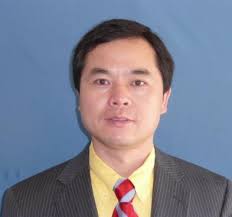

Shibin Jiang
AdValue Photonics Inc
Dr. Shibin Jiang is founder and President of AdValue Photonics Inc. and Adjunct Research Professor at College of Optical Sciences, University of Arizona. He received Ph.D. degree from Universite de Rennes 1, France. He was Co-founder and CTO of NP Photonics Inc before founding AdValue Photonics in 2008 . Dr. Jiang holds 49 issued US patents, edited 23 proceeding books, authored more than 150 publications, and has H index of 43. He served as chairs of 26 international technical conferences including OPTO at Photonics West for SPIE and Advanced Solid State Laser Congress for OSA. He served as many award committees for OSA, SPIE and ACerS, and associate editors for 4 scientific journals. He was the chair for Glass and Optical Materials Division, The America Ceramic Society, in 2014. Currently he is a member of nominating committee of ACerS. His research activities generated more than a dozen of the world's first commercial products, which are widely used. Dr. Jiang was awarded with the Gottardi Prize in 2005 from International Commission on Glass, 2012 R&D 100 Award, and 2014 R&D 100 Award. Dr. Jiang is a Fellow of SPIE, The America Ceramic Society, and OSA


Eng. Alina Catrinel Ion
University Politehnica of Bucharest, Romania

Mário F. S. Ferreira
University of Aveiro Univ de Aveiro, Dept. of Physics Campus Santiago, Portugal... Biography
Mário F. S. Ferreira
University of Aveiro Univ de Aveiro, Dept. of Physics Campus Santiago, Portugal
Mário F. S. Ferreira graduated in Physics from the University of Porto, Portugal, and received the Ph.D. degree in Physics in 1992 from the University of Aveiro, Portugal, where he is now a Professor at the Physics Department. Between 1990 and 1991 he was at the University of Essex, UK, performing experimental work on external cavity semiconductor lasers and nonlinear optical fiber amplifiers. His research interests have been concerned with the modeling and characterization of multi-section semiconductor lasers for coherent systems, quantum well lasers, optical fiber amplifiers and lasers, soliton propagation, polarization and nonlinear effects in optical fibers. He is actually the leader of the Optics and Optoelectronics Group of the I3N – Institute of Nanostructures, Nanomodelling and Nanofabrication. He has written about 400 scientific journal and conference publications, and several books, namely: “Optics and Photonics” (Lidel, 2003, in Portuguese), “Topics of Mathematical Physics” (Editora Ciência Moderna, 2018, Brazil, in Portuguese), “Optical Fibers: Technology, Communications and recent Advances” (Ed., NOVA Science Publishers, 2017), “Advances in Optoelectronic Technology and Industry Development” (CRC Press, 2019), “Optical Signal Processing in Highly Nonlinear Fibers” (CRC Press, 2020), and “Nonlinear Effects in Optical Fibers” (John Wiley & Sons, OSA, 2011) . He was the Guest Editor of two Special Issues of “Fiber and Integrated Optics” (Taylor & Francis): “Fiber Optics in Portugal” (2005) and “Nonlinear Fiber Optics” (2015), and a Special Issue of “Fibers” (MDPI): “Optical Fiber Communications” (2018). Actually, he is Guest Editor of a Special Issue Fiber and Integrated Optics on “Quantum Communications” and another of “Applied Optics” and “Optics Express” (OSA) on “Optical Sensors and Sensing 2019”
He is a Senior Member and a Travelling Lecturer of both of the Optical Society of America (OSA) and SPIE - The International Society for Optical Engineering, He served in various committees of OSA and of SPIE, as well as in the organizing and scientific committees of various international conferences. Actually, he serves also as an Associate Editor or as an Advisor Board Member of several international journals in the area of optics and photonics.


Allel Hadjali
ISAE-ENSMA, France
Allel hadjal is Full Professor in Computer Science at the National Engineering School for Mechanics and Aerotechnics (ISAE-ENSMA), Poitiers, France. He is a member of the Data & Model Engineering research team of the Laboratory of Computer Science and Automatic Control for Systems (LIAS/ISEA-ENSMA). His main area of research falls within Data Science field, and more specifically, the research topics related to Data Exploitation & Analysis (sensor data, semantic data, incomplete data), Knowledge Extraction and Recommendation. His current research interests include Soft Computing and Computational Intelligence in Databases (Cooperative/Intelligent Databases, Data fusion/integration, Data quality, Data Uncertainty, Data Security, Privacy and Trust), Machine Learning-based Recommendation, Approximate/Uncertain Reasoning with applications to Artificial Intelligence and Information Systems. His recent works were published in well-known journals (e.g., Applied Soft Computing, Knowledge and Information Systems, Fuzzy Sets and Systems, International Journal of Intelligent Systems, Journal of Intelligent Information Systems and Annals of Mathematics and Artificial Intelligence). He also published several papers in International Conferences (ESWC, ICTAI, Fuzz-IEEE, FDEXA, QAS, SUM, ISMIS, IPMU, CoopIS, IFSA, ACM SAC, ICWS, SCC, ER, VLDB and EDBT (demo papers)). He co-organized several special sessions on "Advances in Soft Computing Applied to Databases and Information Systems" in conjunction with EUSFLAT (2009 and 2011) Conference, “Advances in Bipolarity in Databases” in conjunction with EUSFLAT (2013), “Advances in Data Management in the Context of Incomplete Databases” in conjunction with IFSA (2015) Conference, “Uncertainty in Cloud Computing” in conjunction with DEXA (2017) . He co-organized also several special issues in well-known journals, among them, "Flexible Queries in Information Systems" in Journal of Intelligent Information Systems (2009), "On Advances in Soft Computing Applied to Databases and Information Systems" in Fuzzy Sets and Systems Journal (2011), “Post LFA 2015 Conference” in Fuzzy Sets and Systems Journal (2017), “Uncertain Cloud” in International Journal of Approximate Reasoning (2019). The complete list of his publications is available in http://www.lias-lab.fr/members/allelhadjali.
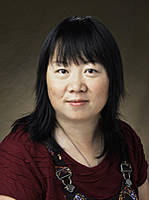

Danling Wang
North Dakota State University, USA
Danling Wang is an Assistant Professor of the Department of Electrical and Computer Engineering at North Dakota State University, where she has been since 2016. Dr. Wang graduated from Department of Electrical Engineering in University of Washington, Seattle, in 2014. Since 2008, her research is focused on investigation of portable chemiresistive sensors particularly based on nanostructured materials such as metal-oxide semiconductors in application to explosive detector in industry and military, and breath analyzer for early stage disease diagnosis. The theme of her research is to create high performance sensor devices through exploring the relationships between the composition/structure of materials and their electric, optical and electrochemical properties and studying the interaction between gas molecules and a solid-state film. The main goal of her research is to deliver in-depth fundamental research with regard to sensor materials and devices in application of disease diagnosis, health status monitoring, industrial and food safety.
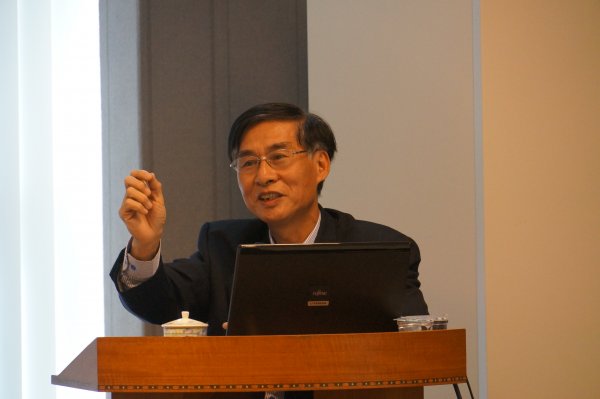

Ching-Ting Lee
National Cheng-Kung University, Taiwan
Ching-Ting Lee received his B.S. and M.S. degrees in the Electrical Engineering Department of the National Cheng Kung University, Taiwan, in 1972 and 1974, respectively. He received his Ph.D. degree from the Electrical Engineering Department from the Carnegie-Mellon University, Pittsburgh, PA, in 1982.
He worked at Chung Shan Institute of Science and Technology, before he joined the Institute of Optical Sciences, National Central University, Chung-Li, Taiwan, as a professor in 1990. He joined on National Cheng Kung University as the Dean of the College of Electrical Engineering and Computer Science from 2003 to 2009, and was the chair professor at the Institute of Microelectronics, Department of Electrical Engineering of the National Cheng Kung University. Now, he is the chair professor and vice president in Yuan Ze University.
Among the awards and honors, he has received are Fellow of IEEE and Fellow of IET; the Outstanding Research Professor Fellowship from the National Science Council (NSC), Taiwan; Distinguished Service Award from Institute of Electrical Engineering Society; the Optical Engineering Medal from Optical Engineering Society; Distinguish Electrical Engineering professor award from Chinese Institute of Electrical Engineering Society, and Distinguish Engineering professor award from the Chinese Institute of Engineers. He received the ASIA’s Education Excellence Awards from Le Meridien Singapore.
His current research interests include nano materials and devices, biosensors, light emission of Si nanoclusters, nanostructure of solar cells, GaN-based light-emitting diodes and lasers, and GaN-based field effect transistors. His research activities have also investigated III-V semiconductor lasers, photodetectors and high-speed electronic devices, and their associated integration for electro-optical integrated circuits.
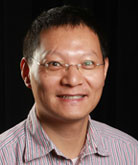

Hongbo Su
Florida Atlantic University, USA
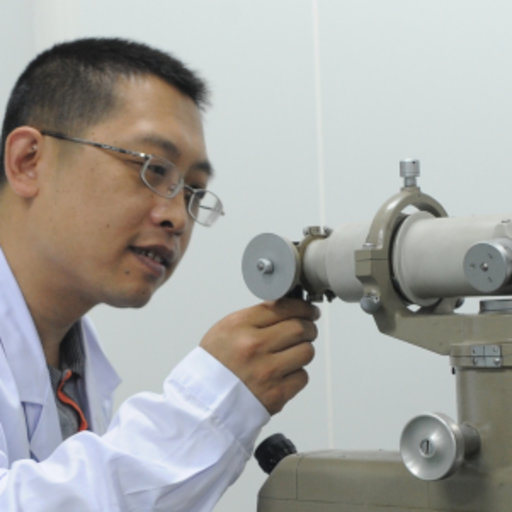

Fu Yuegnag
Changchun University of Science and Technology, China
Fu Yuegnag Dean of the school of opto-electronics Engineering,Changchun University of Science and Technology, China. His research interest is Spectral imaging,Polarization imaging and bioinspired optics. He has published more than 90 papers and was granted with 20 patents. He is the Director of the Key Laboratory of Opto-electronic Measurement and Optical Information Transmission Technology Ministry of Education and Vice-Chairman of the Committee for Standardization of Photoelectric Measurement (TC487).


BING YU
Marquette University and Medical College of Wisconsin, USA
Professional Preparation
- Postdoctoral Associate, 2005–2008, Biomedical Engineering, Duke University
- Ph.D., 2005, Electrical and Computer Engineering, Virginia Tech
- M.S., 1994, Optoelectronics Technology, University of Electronic Science and Technology of China
- B.S., 1989, Optoelectronics Technology, University of Electronic Science and Technology of China
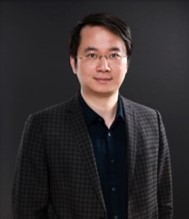

Zhou Linjie
Shanghai Jiao Tong University, China
Linjie Zhou is a full professor of the School of Electronic Information and Electrical Engineering, Shanghai Jiao Tong University. He received his B.S. degree in microelectronics from Peking University in 2003. He received his Ph.D. degree in electronic and computer engineering from the Hong Kong University of Science and Technology in 2007. From 2007 to 2009, he worked as a postdoctoral researcher at University of California, Davis. In 2010, he joined the State Key Lab of Advanced Optical Communication Systems and Networks of Shanghai Jiao Tong University. His research interests include silicon photonics, plasmonic devices, and optical integration. He has published near 200 peer-reviewed international journal and conference papers and has given more than 50 invited talks in international conferences. He has organized many sessions in multiple international and domestic conferences. He is the associate Editor for IEEE Photonics Technology Letters. He was elected as the “Yangtse River Young Scholar” by the Minister of Education of China in 2016. He was granted with “Newton Advanced Fellowship” in 2016 and “National Science Fund for Excellent Young Scholars” in 2014 and entered the “Shanghai Rising-Star Program” in 2014. He also awarded with SMC Excellent Young Faculty Award of Shanghai Jiao Tong University in 2010 and 2014 .


Ali H. Reshak
University of Basrah, Basrah- Iraq
Prof. Dr. Eng. Ali H. Reshak (H-index WoS=40) is Full Professor at Czech Technical University –Prague- Czech Republic, Full Professor and Principal Research Fellow at Nanotechnology & Catalysis Research Center- Malaya University in KL, Malaysia. He is the winner of the Abdul Hameed Shoman Award. He is a Durham University senior fellow (UK) and Malaya University Principal Research fellow (Malaysia). Recently Prof. Dr. Eng. Ali H. Reshak had been awarded an Honorary Doctorate of Engineering from the University of Malaysia Perlis for his achievements in Sciences and Technology. He is well recognized in the field of nanotechnology, Catalysis, Photocatalysis, solar cells, renewable energy, energy efficiency in built environment, green energy and environment, electronic structure, linear, nonlinear optical properties and the other properties, rechargeable batteries, hybrid materials, alloys, biological crystals, Ionic liquid, single crystals, quantum electronics, optoelectronic materials and the devices based on them, bulk and low dimensional nanoscale materials such as nanotubes, nanowires, nonomaterials, Graphene, Graphane, Graphite and thin-films, novel multi-functional materials which can produce visible, ultraviolet and infra-red laser radiation at wavelengths that are presently inaccessible via conventional sources for many industrial, medical, biological and entertainment applications, laser design and laser applications, microscopy and spectroscopy.
Prof. Reshak, expert in laser design he designed and constructed several laser systems for medical care for example; laser system for psoriasis, human skin treatment, tuberculosis treatment (TB) treatment, removing wrinkles … etc. Prof. Reshak has published more than 600 scientific articles, seven books, five chapters in boos, five software, three international patents. He is a member of the American Chemical Society, American Optical Society and the European Laser Society.


Hai-Feng (Frank)
Drexel University, USA
Dr. Hai-Feng (Frank) Ji is current a professor of Department of Chemistry, Drexel university. His research interests focus on MEMS devices, nanopillars and phosphene for energy applications, nanomaterials for energy and environmental applications, polymers, drug discovery, and surface chemistry. He is currently a co-author of 180 peer-viewed journal articles and book chapters. He has an H-index of more than 34.
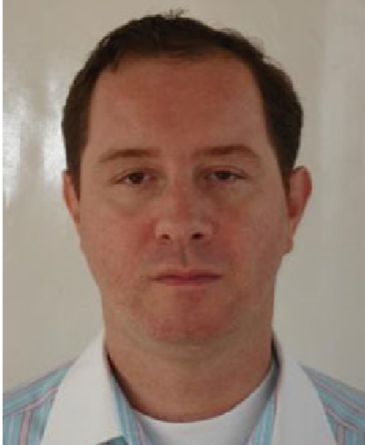

Anastasios Doulamis
Technical University of Crete Kounoupidiana, Greece
Anastasios Doulamis received the Diploma degree in Electrical and Computer Engineering from the National Technical University of Athens (NTUA) in 1995 with the highest honor (9.52 out of 10, first ranked among all classmates) and the PhD degree in Electrical and Computer Engineering from NTUA in 2000. He is currently Associate Professor in Technical University of Crete, while he has also elected in the faculty of the National Technical University of Athens. Prof. Anastasios Doulamis has received several awards and prizes during his studies, including the Best Greek Student in all fields of engineering in national level in 1995, the Best Graduate Thesis Award in the area of Electrical Engineering in 1996 and several prizes from the National Technical University of Athens, the National Scholarship Foundation and the Technical Chamber of Greece. In 1997, he was given the NTUA Medal as Best Young Engineer. In 2000, he received the best Phd thesis award by the Thomaidion Foundation. He is author of more 150 papers in the area of multimedia processing and artificial intelligence among them more than 15 in IEEE/ACM journals papers and more than 43 journal papers. Prof. Anastasios Doulamis is the Coordinator of the EU funded project 4D Ch World, and the scientific responsible of the EU funded projects Poseidon, e-Park, ITN-DCH.

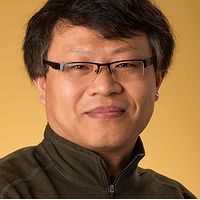

Jianming Wen
Kennesaw State University, United States
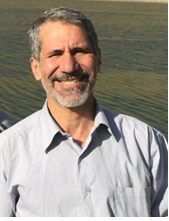
Mohammad Hossein Mahdieh
Advisory Committee of International Symposium on High Power Laser Systems and Applications... Biography
Mohammad Hossein Mahdieh
Advisory Committee of International Symposium on High Power Laser Systems and Applications
Mohammad Hossein Mahdieh was born in Tehran. He received BSc and MSc degree in Applied Physics from Sharif University of Technology, Tehran, Iran, in 1988, and 1992 respectively. He graduated from the University of Essex, Essex, UK and received his PhD in Physics (Laser Plasma Interactions) in 1996. In 1997 he joined Iran University of Science and Technology (IUST), Tehran, Iran, where he is presently an academic staff in the department of physics. His current researches interests include high power pulsed lasers, and their interactions with plasma and matter, and laser propagation in different media.
Professor Mahdieh is a member of the Iran Society of Physics, Optics and Photonics Society of Iran. He also has become a member of the International Advisory Committee of International Symposium on High Power Laser Systems and Applications (formerly, Gas Flow and Chemical Lasers and High Power Lasers GCL & HPL) since 2010.
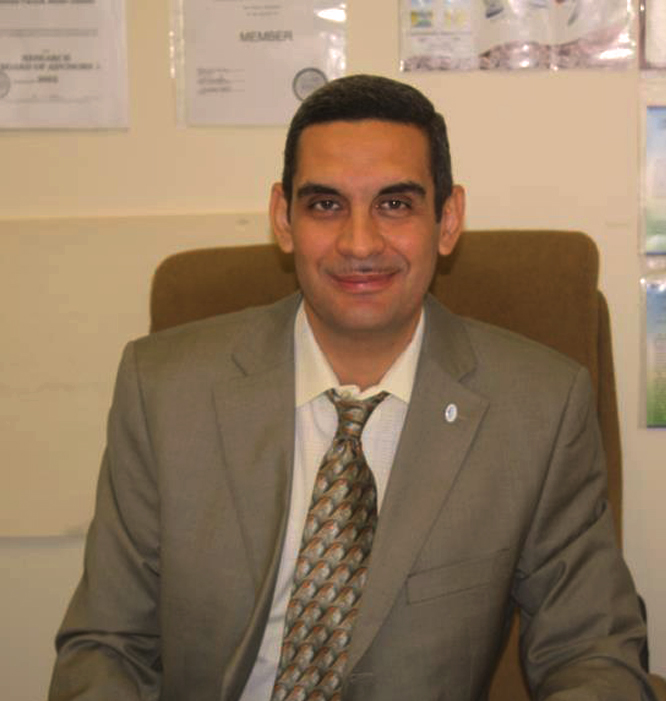

Ahmed Farouk
Ryerson University, Toronto, Canada
- Prof. Dr. Ahmed Farouk Abdel Gawad is an Egyptian professor of "Computational Fluid Mechanics" in Mechanical Power Engineering Department, Vice Dean for Graduate Studies and Research, Faculty of Engineering, Zagazig University, Zagazig, Egypt science 2009.
- He was a professor in Mechanical Engineering Department (ABET Accredited), College of Engineering and Islamic Architecture, Umm Al-Qura University, Makkah, Saudi Arabia (2010-2015).
- He was a "Visiting Scholar" in Virginia Tech, Blacksburg, USA.
- He is Fellow of IEF, Associate Fellow of AIAA, Member of ASME, ACS, SIAM, AAAS.
- His biography was listed many times in Marquis Who's Who (USA), IBC (UK) and ABI (USA).
- Dr. Ahmed has published a big number of technical papers in international journals and conferences, which are cited in many text books, Ph.D. dissertations, M.Sc. theses, journals, conferences, and technical reports.
- He has supervised many Ph.D. dissertations, M.Sc. theses, and B.Sc. graduation projects.
- He was a member of two teams of six patents (USA, Canada, Japan).
- Dr. Ahmed was the general coordinator of the "8th, 9th, 10th and 11th International Congress of Fluid Dynamics" that was co-organized by ASME and Egyptian Universities.
- Dr. Ahmed has many scientific activities.
- He is an evaluator in the "Egyptian National Scientific Committee of Mechanical Power Engineering, Motor Vehicles, and Aviation" for the promotion of faculty members to the degree of professor and associate professor (Jan. 2013-Dec. 2015).
- He is a reviewer for many international journals, conferences and research projects.
- He is the ASME student section advisor in Mechanical Engineering Department, Umm Al-Qura University, Saudi Arabia.
- He is Lead Guest Editor, Special Issue: Hands-on Learning Technique for Multidisciplinary Engineering Education, American Journal of Aerospace Engineering (AJAE), Regional section editor of "Transaction on Control and Mechanical Systems (TCMS)", Member of the "Editorial Board" of other international journals.


Hai-Han Lu
National Taipei University of Technology, Taiwan
Hai-Han Lu received his Ph.D. degree from the Institute of Electro-Optical Engineering, National Central University, Taiwan, in 2000. He joined the Department of Electro-Optical Engineering, National Taipei University of Technology as an Associate Professor in 2001, as well was promoted to Professor and Distinguish Research Professor in 2003 and 2006, respectively. His research interests include radio-over-fiber (RoF) and fiber optics CATV transport systems. He has authored or coauthored more than 120 papers in SCI cited international journals and more than 60 papers in international conferences. Professor Lu is currently a Fellow of the IET, a Senior Member of the IEEE, a Member of the SPIE, and a Member of the OSA. He was a Membership Committee of the SPIE (2004-2005). He was awarded the ETRI Journal Paper of the Year (SCI, 2007), Outstanding Research Prize of NTUT (2004), and Outstanding Research Prize of EECS in NTUT (2007) for his significant technical contributions.
Lecture Title(s)
Radio over GI-POF Transport Systems: Lightwave transport systems have been developed with high expectations for future communications due to such advantages of optical fiber with low transmission loss, large bandwidth, and transparent characteristics for signal transmission. However, lightwave transport systems for very-short-reach (VSR) end user applications have not yet addressed. With the rapid development of information technology, the increasing demand for broadband services raises the needs for high bandwidth services, not only for the single-mode fiber (SMF)-based primary networks, but also for the plastic optical fiber (POF)-based in-house networks. Nevertheless, the in-house connection becomes a critical bottleneck to successfully transport high quality signals from the central office (CO) to the home. To overcome the challenge, a new kind of in-house network medium is required to replace the existed coaxial cable or twisted pair. Recently, graded-index POF (GI-POF) has been developed with better performance and lower cost. This flash product is the promising candidate to solve the last mile problem of fiber-to-the-home (FTTH). Clear advantages are offered by using the GI-POF for in-house networks: its large core diameter and small bending radius considerably eases coupling and splicing, as well as its ductility and flexibility simplifies installation in customer locations. As a result, a GI-POF network is an ideal medium to integrate backbone/access networks and in-house ones. In this report, an integration of FTTH and GI-POF in-house networks based on injection-locked vertical cavity surface emitting lasers (VCSELs) and direct-detection technique is proposed and demonstrated. In the proposed structure, RF signals are transmitted from the CO to the client premises, and then to the dedicated rooms. The proposed lecture employed two wavelengths for 5.8 and 10 GHz worldwide interoperability for microwave access (WiMAX) signals transmission. Improved performances of bit error rate (BER) over a combination of 20-km SMF and 50-m GI-POF transmission are obtained. Signal qualities meet the WiMAX demand with data signals of 20Mbps/5.8GHz and 70Mbps/10GHz, respectively. It verifies that GI-POF is a promising solution for in-house networks, in which providing low-cost and robust end user applications.
A Novel Hybrid Three-Band Transport System: With the ubiquitous popularity of handheld devices, the demands on wireless and wired-line capacity have grown rapidly. The next generation communication systems require large data rate and broadband services highly. Radio-over-fiber (RoF), fiber-to-the-X (FTTX), and fiber optical CATV systems are promising candidates to meet the demands in wireless and wire-lined optical access networks. RoF transport systems have the ability to offer significant mobility, economic advantage, and large capacity due to the characteristics of broad bandwidth and low transmission loss. FTTX networks have offers the last mile solution in optical access networks. In addition, fiber optical CATV systems are deployed widely to provide broad bandwidth to subscribers. A hybrid three-band transport system that uses different optical wavelength to deliver combined RoF RF/FTTX BB/CATV analog signals would be quite useful for a fiber networks providing telecommunication, Internet, and CATV services. In this lecture, a potentially cost-effective RoF/FTTX/CATV hybrid three-band transport system based on direct modulation of a DFB LD with multi-wavelength output characteristic is proposed and demonstrated Transmission performances over an 80-km single-mode fiber (SMF) transport were studied. With the help of direct-detection technique and optical single sideband (SSB) scheme at the receiving site, low bit error rate (BER) and clear eye diagram were achieved for ROF and FTTX applications; as well as good performances of carrier-to-noise ratio (CNR), composite second-order (CSO) and composite triple beat (CTB) were obtained for CATV signals.
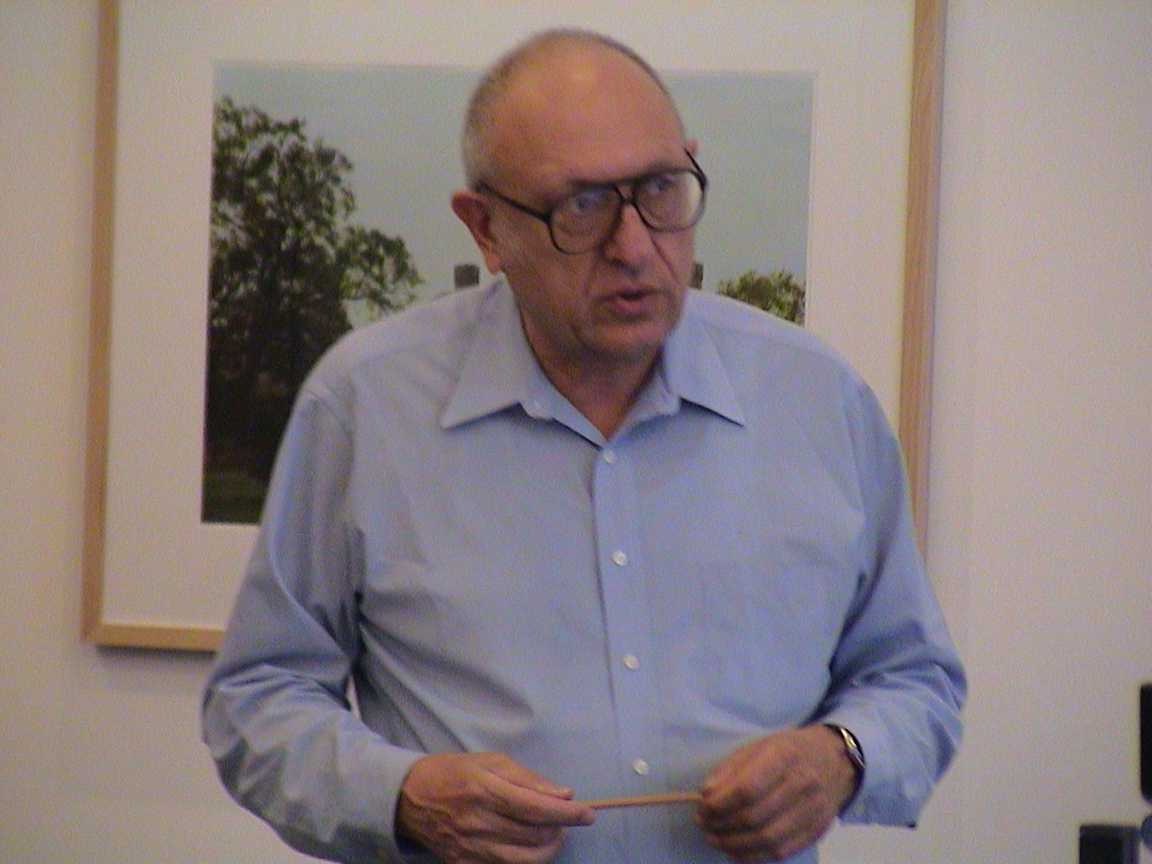

Ephraim Suhir
University of California, USA
Dr. Suhir is Distinguished Member of Technical Staff (ret), Bell Laboratories, Basic Research, Physical Sciences and Engineering Research Division, Murray Hill, NJ. He is currently on the faculty of the Electrical Engineering Dept. University of California, Santa Cruz, CA. He is also Visiting Professor, Mechanical Engineering Dept., University of Maryland, College Park, MD; and Guest Professor, Institute of Optics and Precision Mechanics, Chinese Academy of Sciences, Xi’an, China. He is Fellow of the Institute of Electrical and Electronics Engineers (IEEE), the American Physical Society (APS), the Institute of Physics(IoP), UK, the American Society of Mechanical Engineers(ASME), and the Society of Plastics Engineers (SPE).
Dr. Suhir has been recently elected as Foreign Full Member (Academician) of the National Academy of Engineering and Technological Sciences, Ukraine; as Fulbright Scholar, Council for International Exchange of Scholars (CIES), StateDepartment, US; and as Editor, Silicon Valley Engineering Council (SVEC) Journal. He is Member of the Board of Governors and Distinguished Lecturer of the IEEE CPMT (Components, Packaging and Manufacturing Technology) Society, Associate Editor of the IEEE CPMT Transactions on Advanced Packaging, Member of the ECTC (Electronic Components and Technology Conference) Applied Reliability Subcommittee, the IEEE CPMT award committee, the IEEEFellow nomination committee, and the ASME General Awards committee.
Dr. Suhir is a co-founder of the ASME Journal of Electronic Packaging and served as its Technical Editor for eight years (1993-2001). He has authored about 300 technical publications (patents, papers, book chapters, books), including books “Structural Analysis in Microelectronics and Fiber Optics”, Van-Nostrand, 1991, and “Applied Probability for Engineers and Scientists”, McGraw-Hill, 1997. Dr. Suhir is editor of the Springer book series on physics, mechanics and packaging of microelectronic and photonic systems. He organized many successful conferences and symposia and presented numerous keynote and invited talks worldwide.
Dr. Suhir received many professional awards, including: 2004 ASME Worcester Read Warner Medal for outstanding contributions to the permanent literature of engineering through a series of papers in Mechanical, Microelectronic, and Optoelectronic Engineering, which established a new discipline known as the Structural Analysis of Microelectronic and Photonic Systems (he is the third Russian American, after Steven Timoshenko and Igor Sikorsky, who received this prestigious award); 2001 IMAPS John A. Wagnon Technical Achievement Award for outstanding contributions to the technical knowledge of the microelectronics, optoelectronics, and packaging industry; 2000 IEEE-CPMT Outstanding Sustained Technical Contribution Award for outstanding, sustained and continuing contributions to the technologies infields encompassed by the CPMT Society; 2000 SPE International Engineering/Technology (Fred O. Conley) Award for outstanding pioneering and continuing contributions to plastics engineering; 1999 ASME and Pi-Tau-Sigma Charles Russ Richards Memorial Award for outstanding contributions to mechanical engineering, and 1996 Bell Laboratories Distinguished Member of Technical Staff Award for developing extremely accurate and robust engineering mechanics methods for predicting the reliability, performance, and mechanical behavior of complex structures used in manufacturing Lucent Technologies products.


Sergey Savenkov
Taras Shevchenko National University of Kyiv, Ukraine
Sergey N. Savenkov graduated from the Taras Shevchenko National University of Kyiv in 1986. In 1996 and 2013 at the same university he received PhD and Dr. Sci., respectively. Today Dr. Savenkov is a Professor and Head of Electrophysics Department of Taras Shevchenko National University of Kyiv.
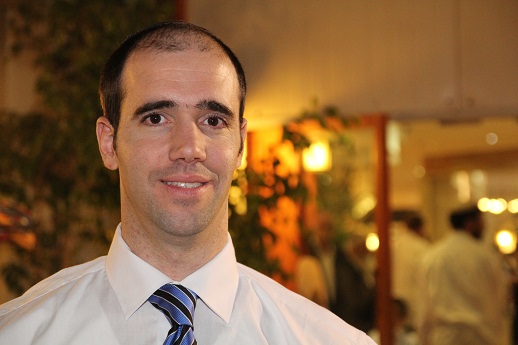

Menachem Glik
The leading photonics, lasers, and machine - vision magazine
Menachem Glik is the founder and editor of chief of opli.net, the leading photonics, lasers, and machine - vision magazine in the world. Menachem has graduated high - school in 1999 and taught himself how to create websites. Few years later he founded opli. In 2006 Menachem started to work as a sales engineer of optics, and represented companies like Edmund Optics, II-VI and more others companies in Israel. Then in 2011 he quit his job as a sales engineer. Today opli.net is the number one magazine in the world for photonics, lasers and machine vision.
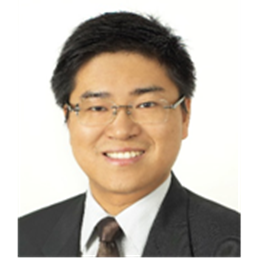

Han Zhang
Shenzhen University, China
Education
- 2007.1-2010.10 Ph.D, Nanyang Technological University, Singapore
- 2002.9-2006.07 Bachelor, Wuhan University, China
Academic Appointments
- 10/2010-04/ 2012 Postdoctoral Researcher OPÉRA-Photonique, Université libre de Bruxelle, Belgium
- 04/2012-04/2013 Research Fellow, Graphene Research Center, NUS, Singapore
- 04/2013-Present Professor, College of Optoelectronic Engineering, Shenzhen University, China
- 04/2016-Present Director, Shenzhen Key Laboratory of two- dimensional Materials and Devices
- 09/2016-Present Director, Shenzhen Engineering Laboratory of phosphorene and optoelectronics
Awards and Honors
- 2019 OSA Fellow
- 2019 Highly Cited Researcher by Clarivate Analytics
- 2018 Highly Cited Researcher by Clarivate Analytics
- 2017 OSA Outstanding Reviewer Award
- 2012 National “Thousand Talents Program” for Distinguished Young Scholars, China
- 2012 National Science Fund for Excellent Young Scholars, China
- 2011 New Century Excellent Talent Award, MOE, China
- 2013 Distinguished Young Scientist of Hunan Province, China
- 2011 Outstanding Ph. D Abroad awarded by Chinese Government, MOE, China
Committee & Professional Service Assignments
- Scientific journal review and editor responsibilities
- 2017-Present Editorial Board Member, Scientific Reports. Oversee the peer review process of assigned manuscripts focused on photonics and optoelectronic devices, including identifying and soliciting peer reviewers, coordinating revisions and re-reviews, and making final publication decisions.
- 2017-Present Associate Editor of Photonics Research, OSA
- 2014 Lead Guest Editor of Photonics Research special issues. Responsibilities included soliciting manuscript submissions and overseeing peer review process, i.e. identifying reviewers and making publication decisions.
- 2015 Lead Guest Editor of Optical Engineering special issues. Responsibilities included soliciting manuscript submissions and overseeing peer review process, i.e. identifying reviewers and making publication decisions.
- 2016 Lead Guest Editor of Photonics Research Optics Communication special issues and Chinese Laser special issues.
- 2016 Lead Guest Editor of Chinese Optics Letters special issues
- 2016 Lead Guest Editor of Chinese Physics B
- 2008-Present Reviewers for PRL, Photonics Research, Optics Letters, Optics Express, PRL, IEEE Journals, Advanced Materials, ACS Photonics, Nano Letters , Scientific Reports etc.
Peer-Reviewed Publications
- (Total Citations >29, 000 and H factor: 89)
- Selected papers/reviews in the last four years on the related topic
- (Prof. Han Zhang as the corresponding author; 2016-2019)
- Nat Commun 2016, 7: 12967.
- Nat Commun 2019, 10: 4062.
- Nat Commun 2019, 10: 28.
- Proc Natl Acad Sci U S A 2018, 115 (3): 501-506.
- Nat Commun 2020, 11, 1330.
- Science Advance, 2020, just accepted.
- Phy Rep 2019, 795, 1-51.
- Phy Rep 2020, DOI-j.physrep.2019.12.006, just accepted.
- Chem Soc Rev 2019, 48: 2891-2912.
- Chem Soc Rev 2018, 47: 5588-5601.
- Adv Mater 2019, 31 (39): 1902352.
- Adv Mater 2019, 31 (14): 1807981.
- Adv Mater 2019, 31 (2): 1706945.
- Adv Mater 2017, 29 (1): 1603276.
- Adv Mater 2018, 30 (36): 1803031.
- Adv Mater 2017, 29 (1): 1603276.
- Adv Mater 2018, 30: 1706945.
- Adv Mater 2017, 29 (42): 1703811.
- Angew Chem Int Ed 2015, 54 (39):11526-11530.
- Angew Chem Int Ed 2016, 55 (44): 13849-13853.
- Angew Chem Int Ed 2017, 56 (39): 11896-11900.
- Adv Energy Mater 2017, 7 (19): 1700396.
- Adv Funct Mater 2017, 27 (18): 1606834.
- Adv Funct Mater 2017, 27 (32): 1702437.
- Adv Funct Mater 2017, 27 (38): 1702211.
- Adv Funct Mater 2018, 28 (16): 1705833.
- Laser & Photonics Reviews 2019, 13, 1900123
- Laser & Photonics Reviews 2019, 13, 1800313.
- Laser & Photonics Reviews 2018, 12, 1800215.
- Laser & Photonics Reviews 2018, 12, 1800016.
- Laser & Photonics Reviews 12: 1870012.
- Laser & Photonics Reviews 2018, 12, 1700229.
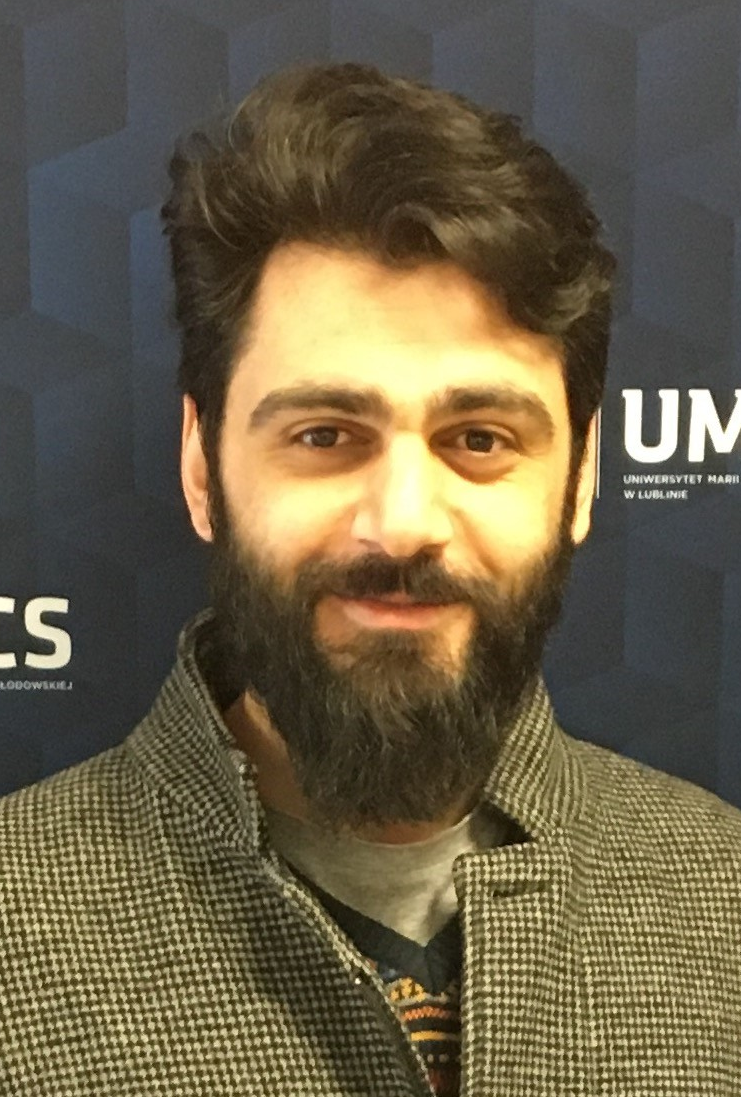

Onur Cetinkaya
Lodz University of Technology, Poland
Onur Cetinkaya received bachelor degree in Chemistry from Eskisehir Osmangazi University (ESOGU) in 2009. He had master degree in Chemistry from Mugla Sitki Kocman University in 2012 while working as Research Assistant. Then he and joined to project funded by EU Comission in June 2014 for his PhD at Laboratory of Optical Fibers Technology, Faculty of Chemistry, Maria Curie-Sklodowska University (Poland). During his PhD, he studied about fabrication of optical materials for polymer optical fibers and optimization of polymer optical fiber drawing. He is currently Postdocral Researcher in Lodz University of Technology since 2018 in a project funded by Polish Academy of Science. His research interest based on characterization and different applications of polymers.
